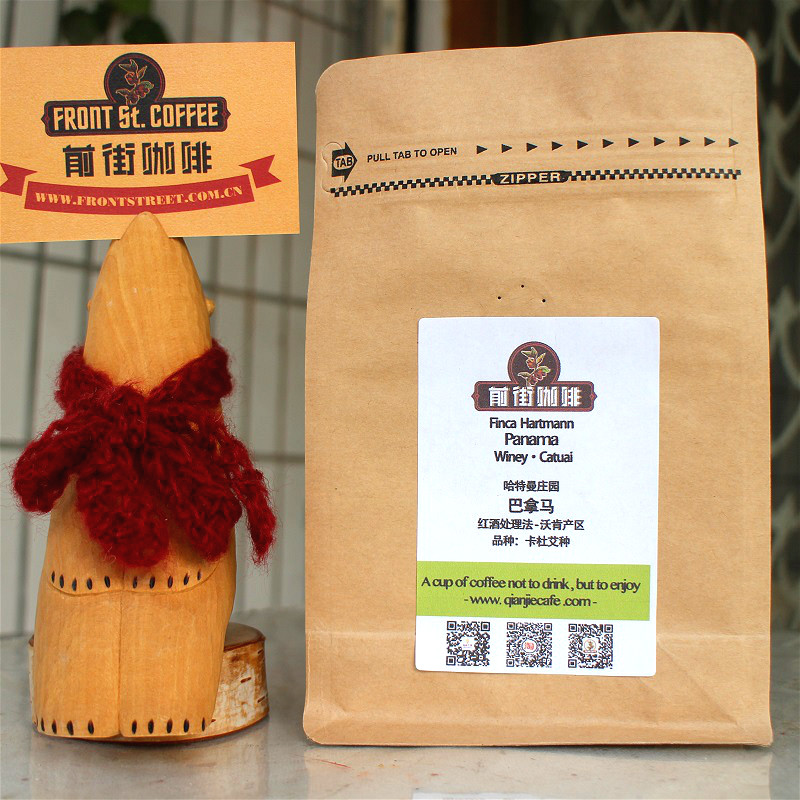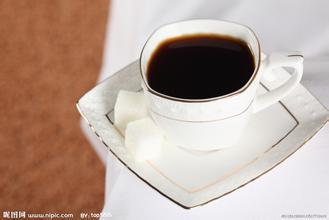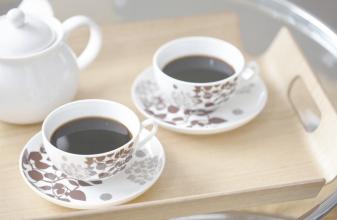Introduction of varieties for flavor description of long-tailed cuckoo coffee beans treated with red wine in Hartmann Manor, Panama
Introduction of varieties for flavor description of long-tailed cuckoo coffee beans treated with red wine in Hartmann Manor, Panama
In such a unique planting environment, Poket is naturally not the only coffee king with emerald rose summer, both in terms of flavor, quality and value, but I think it is quite extravagant to drink rose summer every day, even if there is no economic pressure. it's not like eating shark's fin and bear's paw every day. The same is true of coffee. You need to dabble in a wide range of ways to enjoy the pleasure of tasting coffee. There are many ways to wash the coffee, but generally speaking, after picking the coffee fruit, remove the floating beans, then remove the pulp, and then soak the coffee beans in a fermentation tank. The enzymes in the water will soften the mucus attached to the peel of the coffee beans, and the natural yeast will break down the sugar in the mucus, a process called fermentation. After the fermentation is completed, move the coffee beans to the sun field to dry. In the process of drying, you need to constantly turn the coffee beans to ensure the uniformity of the drying. Finally, the shell is kept in the warehouse, and some raw bean merchants place an order before shelling and bagging. The processed coffee tastes clean, emphasizing bright and lively acidity, as well as clear fruit flavor and floral aroma.
| 01 | production area profile |
An important reason for the unique quality of Panamanian coffee is its microclimate. Bordering Costa Rica and Colombia, Panama's east-west environment allows cold air to flow through the Central Mountains at more than 6500 feet, creating a very unique microclimate in the Boquete and Vol á n Candela regions, making it a major producer of Panamanian coffee. The land around this area is rich in nutrients, and these fertile soils provide perfect conditions for the growth of coffee, creating a large number of unique, high-quality coffee.
[Hartman Manor]
Mr. Alois St. Hartmann, the founder of Hartmann Manor, was born in then Czechoslovakia in 1891. As a result of the war, he emigrated to the United States for education. When he was 20 years old, he traveled to Panama and was so fascinated by the place that he finally settled in Chiriqui and established the predecessor of Hartman Manor.
Today, the estate is continuously run by the third generation of the family, and Mr. Ratibor Hartmann and his four brothers and sisters play different roles in the estate, living together and growing coffee for a living.
The Hartman family also manages and handles coffee for many Panamanian estates, such as Best of Panama's victorious mule estate (Finca La Mula) and the 90 + estate in Panama are under the management of the Hartman family. Although the estate is very low-key, Best Of Panama will rarely see them, but their coffee is one of the best in Panama. Panamanian coffee is famous today, thanks to the Hartman family.
Panama Hartmann Red Winy
2016 Coffee processed with fine red wine honey at Hartmann Manor, Panama
Origin: Boquete, Panama
Bean seed: Caturra
Processing plant: Hartmann
Altitude: 1450-2000 meters
Handling method: Winy
Flavor: ripe berries, red wine fermented aroma, honey sweet
02 | processing method
2015 WBC contestant Sasa brought to the world a Colombian coffee bean that has gone through a similar wine-making process. In addition to the novel taste of beans, the "red wine treatment" that was adopted to treat beans also made editors as curious as many coffee lovers. What on earth is the so-called "red wine treatment"?
Winy for Red Wine treatment of Coffee beans
It can also be called red wine treatment, which is inspired by the brewing technology of red wine. At present, only eight estates in Colombia have successfully introduced coffee beans treated with this method to the market. According to the data of these eight estates, we can roughly divide the types of red wine treatment into: acetic acid fermentation (Aerobic aerobic fermentation), lactic acid fermentation (Anaerobuic anaerobic fermentation), mixed fermentation (Mix Fermentation=Aerobic+Anaerobuic).
The traditional treatment method is difficult to control the changeable fermentation degree of coffee beans. But red wine treatment rules can ensure the quality of coffee beans by controlling PH value, even temperature and humidity, and airtight fermentation makes aroma less volatile.
Next, let's talk about the specific process of fermentation. First of all, Colombian farmers carefully pick coffee cherries and carefully select coffee red fruits to ensure that among the coffee cherries selected for processing, the percentage of immature cherries is less than 2%, defective beans less than 3%, and floating beans less than 5%.
The selected coffee cherries are placed in a specific container by the farmer's uncle, which should have a device similar to a red wine fermentation suppository or a single exhaust valve. In this way, carbon dioxide can be spilled through the device to control the concentration of air in the container. At this time, the coffee cherries in the container are fermented with acetic acid, and the beans are relatively bright, clean and citric acid.
According to Sasa's description in the competition, the processor injected carbon dioxide into the container to prevent oxidation from producing volatile acid, a process known as lactic acid fermentation, which produces malic acid and stone acid, which is relatively stable, so the beans fermented with lactic acid have a more mellow acidity, with cheese, nutty and creamy flavor.
03 | Analysis of raw beans
Tenacious Catuai
Hartman Manor has a wide variety of coffee, including Typica, Kaddura, Catuai, Bourb ó n, Pacamara, Maragogipe and Geisha. The variety of beans to be introduced today is the tenacious Kaduai.
Kaduai is an artificial hybrid of Kaddura and Mondu Novo. Kaduai has a good ability to resist natural disasters, especially wind and rain. Kaduai tree species are relatively low, compared with other coffee trees, the fruit of Kaduai is stronger and harder to pick. The fruit is both red and yellow. So far, it has not been found that yellow fruit tastes better than red fruit. On the contrary, some people found in the cup test that although the coffee processed by some yellow fruits has good acidity, the cleanliness of the coffee taste is worse than that of the red fruit.
04 | Baking analysis
This coffee is intended to be roasted in a medium-slow manner, which can best reflect its round and smooth, fruity red wine.
Roaster Yangjia 600g semi-hot air
Furnace temperature to 200 degrees Celsius into the pot, throttle open 3. 5, 1 minute later adjust the firepower 170 degrees, throttle unchanged, temperature point 1 "39 degrees", furnace temperature 145 degrees adjustment once firepower, at this time the bean table turns yellow, the smell of grass completely disappears, dehydration is completed, firepower is adjusted to 130 degrees, the throttle remains unchanged.
The smell of toast obviously changes to the smell of coffee, which can be defined as a prelude to an explosion. The firepower is adjusted to 80 degrees. At this time, listen clearly to the sound of an explosion point. Start blasting at 8: 43 ". Adjust the firepower to 60 degrees. The throttle is fully open 5 (the firepower should be very careful, not so small as to be free of bursting sound), 1: 43" after an explosion, 195.5 degrees in the pan.
Cup test:
Dried incense: ripe oranges (ripe orange), jasmine flowers (jasmine hints)
Wet fragrance: red wine (winy), honey (honey-like)
Palate: the palate is supple, the acidity is lively and bright, the acidity is soft, the layer is rich, the aftertaste of red wine is obvious, the taste of honey and sugar is obvious, after complete cooling, the flavor of yellow sugar.
05 | Cooking analysis
Recommended cooking methods: siphon, hand flushing
Degree of grinding: 3.5 (Fuji R440, Japan)
Water temperature: 90 °C
V60 filter cup, 15g powder, water temperature 90 degrees, grinding 4, water powder ratio close to 1:15
Steaming in 30 grams of water for 30 seconds
Segment: water injection to 110ml cut off, slow water injection to 225ml
That is, 30-80-105
Other suggestions for trickling extraction:
Normal pressure, recommended grinding degree of 3.5-4 / water temperature 90 °C
Philharmonic pressure, recommended 2.5 grinding degree, water temperature 88 °C
Hand punch: 3.5 degree of grinding, water temperature 89 °C
Qianjie Coffee roasted Hartman Manor Red Wine treated Coffee beans are fully guaranteed in terms of brand and quality. And more importantly, the performance-to-price ratio is extremely high, 227 grams per bag, the price is only 85 yuan. Calculated on the basis of 15 grams of coffee beans per cup, a bag can make 15 cups of coffee, which costs only about 6 yuan per cup, which is recommended by conscience compared to the price of 11 cups sold in cafes.
Purchase link: https://item.taobao.com/item.htm?spm=a1z10.5-c-s.w4002-15673140460.46.42b76d59v7kyWf&id=562649642287


Important Notice :
前街咖啡 FrontStreet Coffee has moved to new addredd:
FrontStreet Coffee Address: 315,Donghua East Road,GuangZhou
Tel:020 38364473
- Prev

Flavor description of coffee beans treated with El Salvador black honey introduction of taste varieties in manor area
El Salvador black honey treatment coffee bean flavor description manor area taste variety introduction in the treatment method, this kind of Mei treatment is almost characteristic of Costa Rica, but also has been answered by some respondents. As far as I'm concerned, all the treatment is to remove the fruit from the raw coffee beans, and to get rid of it, scraping hard is definitely not a good way.
- Next

Introduction to the price and variety of Yunnan small-grain coffee dripping pot
According to introduction, in 1892, French missionary Father Tian used coffee fruit to breed the first coffee tree outside the church, and then cultivated more coffee trees around the church. Since then, coffee has been grown in Zhukula village, and coffee has been used around the village ever since.
Related
- Detailed explanation of Jadeite planting Land in Panamanian Jadeite Manor introduction to the grading system of Jadeite competitive bidding, Red bid, Green bid and Rose Summer
- Story of Coffee planting in Brenka region of Costa Rica Stonehenge Manor anaerobic heavy honey treatment of flavor mouth
- What's on the barrel of Blue Mountain Coffee beans?
- Can American coffee also pull flowers? How to use hot American style to pull out a good-looking pattern?
- Can you make a cold extract with coffee beans? What is the right proportion for cold-extracted coffee formula?
- Indonesian PWN Gold Mandrine Coffee Origin Features Flavor How to Chong? Mandolin coffee is American.
- A brief introduction to the flavor characteristics of Brazilian yellow bourbon coffee beans
- What is the effect of different water quality on the flavor of cold-extracted coffee? What kind of water is best for brewing coffee?
- Why do you think of Rose Summer whenever you mention Panamanian coffee?
- Introduction to the characteristics of authentic blue mountain coffee bean producing areas? What is the CIB Coffee Authority in Jamaica?

